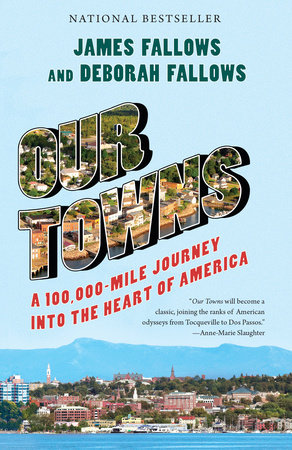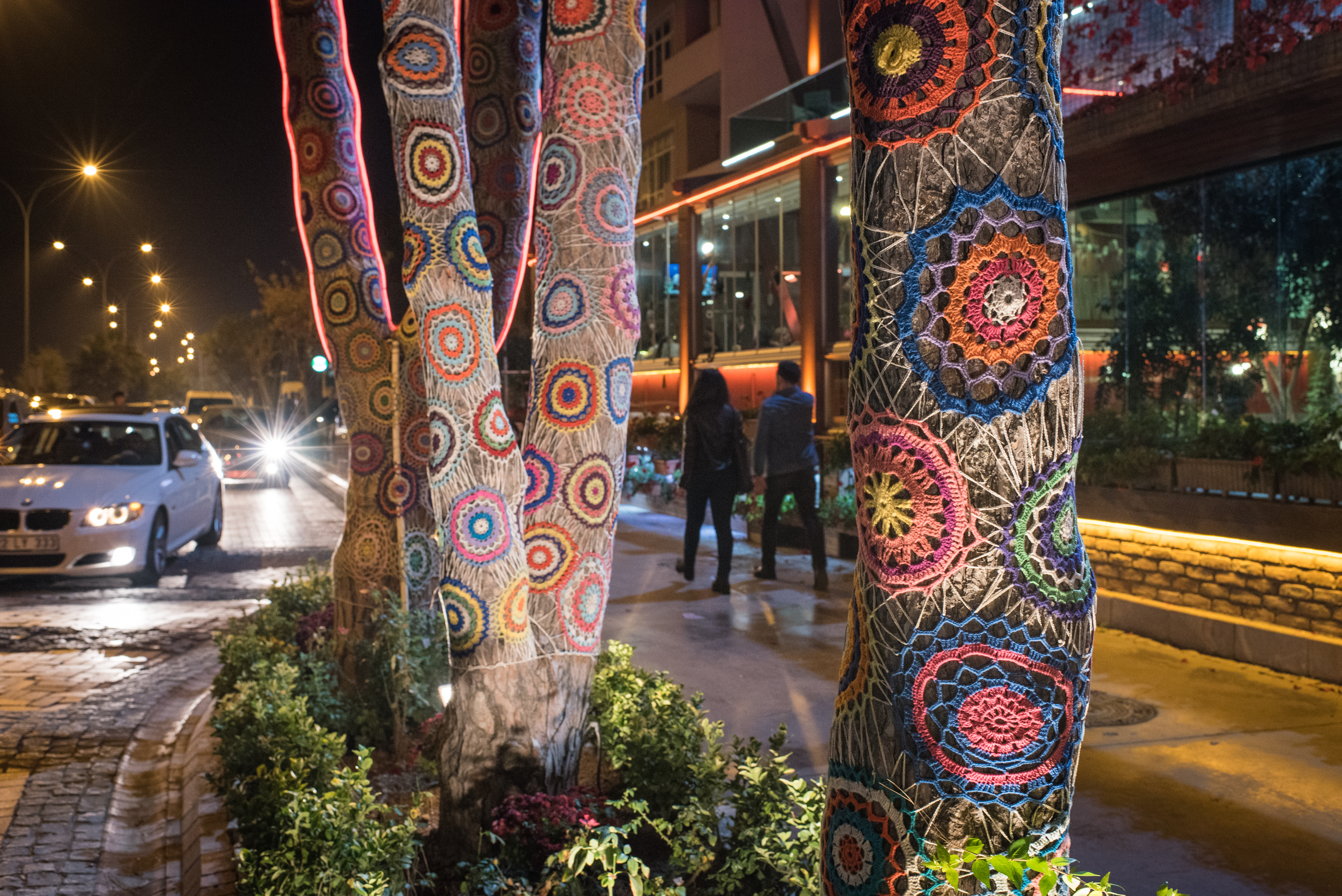Hey there,
It’s 2019, and Mister Rogers is having a moment.
Last year, there was a best-selling biography and a moving documentary about the unflappably polite, besweatered children’s television star. In November, we’ll get to watch Tom Hanks play Rogers in a feature film.
Mister Rogers was on my mind when I attended a Fix event last week in New England and met folks who are spurring neighborhood-level change around the region.
In New Hampshire, clean energy advocates are throwing Avon parties to show off solar panels. In Chelsea, Massachusetts, a neighborhood is feeding undocumented immigrants from an urban farm. In Boston’s Chinatown, a community group is democratizing energy with a micro-scale smart grid. In Vermont, a team of experts is schooling its neighbors in sustainable construction.
Yes, we need big, groundbreaking change if we’re going to solve this climate thing, but solutions-minded communities often provide some of the best models for progress. And they’re good at inspiring people to take action, too — guess that’s just the power of being a good neighbor.
Read on for more examples of local solutions, and as always, feedback about Shift Happens is welcome — and please encourage your friends to sign up.
— Chip, Grist Founder
1. Your new hero

In Chelsea, an industrial, predominantly Latino city on the outskirts of Boston, a new community urban farm is taking root. Leilani Mroczkowski, food justice organizer at the environmental nonprofit GreenRoots, runs the farm — but Mroczkowski is adamant that the community is really the force behind it.
The farm was initially designed to be a food source for the neighborhood’s high concentration of undocumented people, who don’t qualify for federal assistance and often struggle to make ends meet. But in the middle of its first growing season, it’s become a community hub.
“We want to build connections,” Mroczkowski says, “so that when it’s election season and candidates are talking about their policies, folks might think, ‘I know people who are immigrants. I know people who don’t have documents. This policy doesn’t actually work for my neighbor.’”
Find an interview with Mroczkowski here.
Photo: Raya on Assignment
2. Your reading list
 A ton of great community-level solutions are hatching, but they’re far-flung and don’t often make it into the national news. That’s where James and Deborah Fallows’ book Our Towns: A 100,000-Mile Journey Into the Heart of America comes in.
A ton of great community-level solutions are hatching, but they’re far-flung and don’t often make it into the national news. That’s where James and Deborah Fallows’ book Our Towns: A 100,000-Mile Journey Into the Heart of America comes in.
The husband-and-wife team packed up a tiny, single-engine airplane and set off across the country in search of untold stories. “We began this project with one purpose in mind: We wanted to take a fresh look at the country, its disappointments and its possibilities,” Jim Fallows writes. “We ended up … with a story to tell that we could barely have imagined when we were starting out.”
What emerged was a pattern of once-struggling communities building themselves back up, with projects like an innovative, degree-granting “Communiversity” in Mississippi, a 400-mile trail network being built in Texas’ Rio Grande Valley, and an urbanist civic hub in South Carolina. Pretty inspiring!
3. Your pick-me-up
- SLEEPING GIANT: China might blow its Paris climate pledge out of the water. Researchers recently found that as Chinese cities get wealthier, per-capita emissions drop — meaning that the country could reach its carbon peak 10 years earlier than its current target.
- COOL IT: A company called SkyCool Systems is working on technology that can cool the air without using a watt of electricity and has the potential to remake how we cool homes, data centers, and more.
- EXHIBIT CO2: What might we look like to a future that got its shit together? Carbon Ruins, a museum exhibit in Sweden, looks back at our fossil-fuel-obsessed present from 2053, where emissions have reached net-zero and ordinary objects like frequent-flyer cards and beef hamburgers are relics of the past.
- CALIFORNIA SUN: Droughts may be forcing California farmers to cut back on agricultural acreage, but there’s a new crop sprouting and creating jobs: solar farms in the Central Valley.
- I NEED A HERO: Mamma mia, that’s a meatless meatball! A new Beyond Meatball Marinara sub will soon be rolling out in Subway sandwich shops across the country, the latest offering from fast food’s fake-meat obsession.
- IT’LL GET YOU THERE: Seattle is experimenting with a last-mile carpooling service for places that are tough to reach by transit alone. The Grist team put the service to the test.
4. Your next move
- Ginkgo outside: Help scientists understand climate change by collecting leaves from the ginkgo tree, which has survived three mass extinctions and might have a whole lot to tell us about changes in the atmosphere.
- Go by the book: Want people in your community to read about climate change? Put some great green books in your local Little Free Library (or make your own and fill it up!).
- School shopping: It’s back-to-school season, and there’s no better time to support great neighborly efforts to help kids learn. Community crowdfunding site ioby has a whole pile of efforts worth supporting, from a North Carolina elementary school looking to stock its library with books about gardening, to a free arts and ecology camp for youth in Pittsburgh.
5. Your Sunday plans

Photo: Diego Cupolo/NurPhoto/Getty Images
While you certainly don’t have to revamp your entire wardrobe to be a great neighbor, bringing a little of Mister Rogers’s cardigan coziness into town couldn’t hurt.
Enter yarn-bombing: wrapping trees, signs, benches, you name it, in knit creations to bring a little life to your neighborhood. Sure, tree sweaters might not be everyone’s idea of beauty — and, depending where you put ’em, the activity may or may not be legal (be a good neighbor and ask permission before yarn-bombing someone else’s stuff, would ya?). But I bet it’ll put a smile on someone’s face.
For more complete yarn-bombing instructions, try Wikihow or one of many online tutorials— turns out yarn-bombers are pretty helpful folks.
What you’ll need:
- Cloth measuring tape
- Yarn!
- Yarn needle, threaded and ready
- Flashlight, if yarn-bombing under the cover of darkness
- Step-stool, if yarn-bombing something tall
- Neighbors who want to join in on the fun 🙂
Steps:
-
- Hope you know how to knit or crochet. (If not, there’s always the simple method of yarn-wrapping.)
- Measure the thing you want to yarn-bomb.
- Draw a diagram of the thing you want to yarn-bomb, so you can dream up your creation without sitting in front of a tree for two hours and worrying your neighbors.
- Create your yarn-bomb! Go with your gut, or use existing patterns; a simple scarf, knitted to fit, can be a fallback.
- Go out — flashlight in hand — and wrap that shit! Stitch it together using extra yarn and that yarn needle so your creation stays in place.
- Come back in the morning, sip some coffee, and admire your handiwork.
Hey, way to make your town a little brighter. It’s such a good feeling to know you’re alive.

